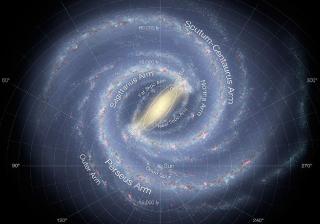Bibcode
Bilir, S.; Ak, S.; Karaali, S.; Cabrera-Lavers, A.; Chonis, T. S.; Gaskell, C. M.
Referencia bibliográfica
VizieR On-line Data Catalog: J/MNRAS/384/1178. Originally published in: 2008MNRAS.384.1178B
Fecha de publicación:
7
2008
Número de citas
0
Número de citas referidas
0
Descripción
We present colour transformations for the conversion of the 2MASS
photometric system to the Johnson-Cousins UBVRI system and further into
the SDSS ugriz system. We have taken SDSS gri magnitudes of stars
measured with the 2.5-m telescope from SDSS Data Release 5 (DR5), and
BVRI and JHKs magnitudes from Stetson's catalogue (available at
http://www2.cadc-ccda.hia-iha.nrc-cnrc.gc.ca/community/STETSON/archive/
) and Cutri et al. (2MASS, 2003, Cat. II/246), respectively. We matched
thousands of stars in the three photometric systems by their coordinates
and obtained a homogeneous sample of 825 stars by the following
constraints, which are not used in previous transformations: 1) the data
are de-reddened, 2) giants are omitted, and 3) the sample stars selected
are of the highest quality. We give metallicity, population type, and
transformations dependent on two colours. The transformations provide
absolute magnitude and distance determinations which can be used in
space density evaluations at short distances where some or all of the
SDSS ugriz magnitudes are saturated. The combination of these densities
with those evaluated at larger distances using SDSS ugriz photometry
will supply accurate Galactic model parameters, particularly the local
space densities for each population.
(1 data file).
Proyectos relacionados

Morfología y dinámica de la Vía Láctea
El Proyecto se estructura en dos partes, diferenciadas pero complementarias: morfología y dinámica. El estudio detallado de la morfología de la Vía Láctea pretende proveer una base de datos de distribución estelar en las regiones más alejadas y extintas de nuestra Galaxia, mediante el desarrollo de modelos semiempíricos a partir de la información
Martín
López Corredoira